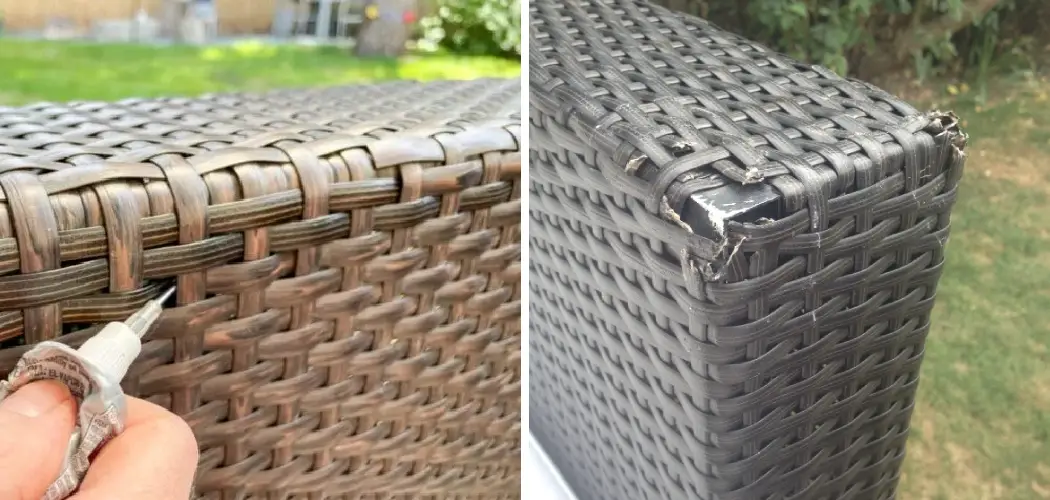Plastic rattan furniture is a popular choice for both indoor and outdoor spaces due to its durability and stylish appeal. Over time, however, exposure to the elements can cause the material to fade, crack, or become brittle. Restoring your plastic rattan furniture not only revives its aesthetic appeal but also extends its life.
This guide on how to restore plastic rattan furniture provides easy-to-follow steps and useful tips for bringing your beloved furniture back to its former glory, ensuring it continues to enhance your living space for years to come.
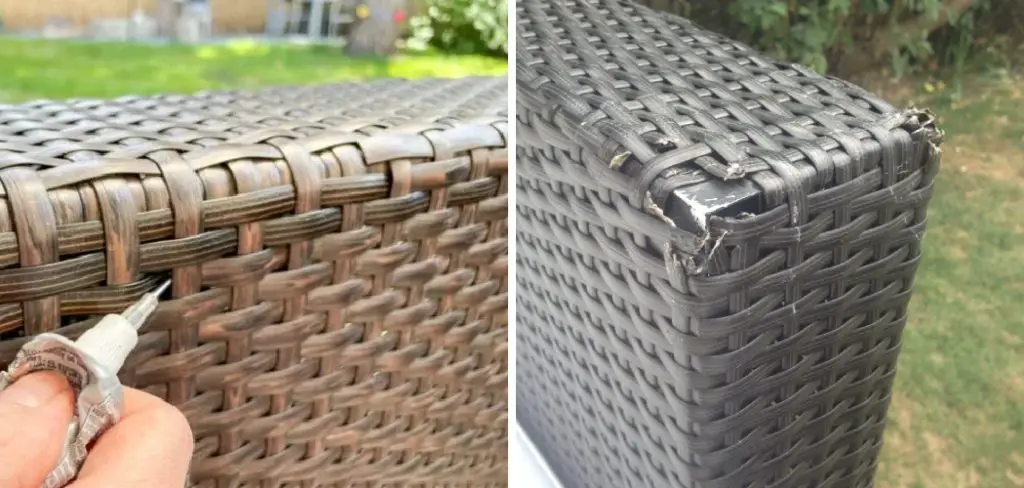
What is Plastic Rattan Furniture?
Plastic rattan furniture is made using synthetic rattan fibers, typically composed of polyethylene or PVC. These materials are woven together to create a lightweight and weather-resistant furniture option that closely resembles natural rattan but without the risk of damage from moisture, insects, or exposure to UV rays.
It comes in a variety of color options and can be used to create a wide range of furniture pieces, from chairs and tables to loungers and sofas. Plastic rattan furniture is also known for its low maintenance requirements, making it a popular choice among homeowners.
Why Restore Plastic Rattan Furniture?
Although plastic rattan furniture is designed to withstand the elements, it is not completely immune to wear and tear. Exposure to sunlight, heat, humidity, and other environmental factors can cause fading, discoloration, and even cracks in the material.
Restoring your plastic rattan furniture is a cost-effective way to prolong its lifespan and maintain its aesthetic appeal. It also allows you to customize the look of your furniture by choosing new colors or patterns that better suit your current style preferences.
8 Step-by-step Guides on How to Restore Plastic Rattan Furniture
Step 1: Clean the Furniture
Begin by thoroughly cleaning the furniture to remove dirt, dust, and any built-up grime. Use a soft brush or cloth to gently scrub the surfaces, ensuring you reach into the crevices and grooves of the rattan weave. Prepare a cleaning solution by mixing mild dish soap with warm water in a bucket. Avoid using harsh chemicals or abrasive scrubbers, as these can damage the plastic fibers.
Dip your brush or cloth into the soapy water and work over the entire piece, rinsing it periodically with clean water. After cleaning, allow the furniture to air dry completely before proceeding to the next step.
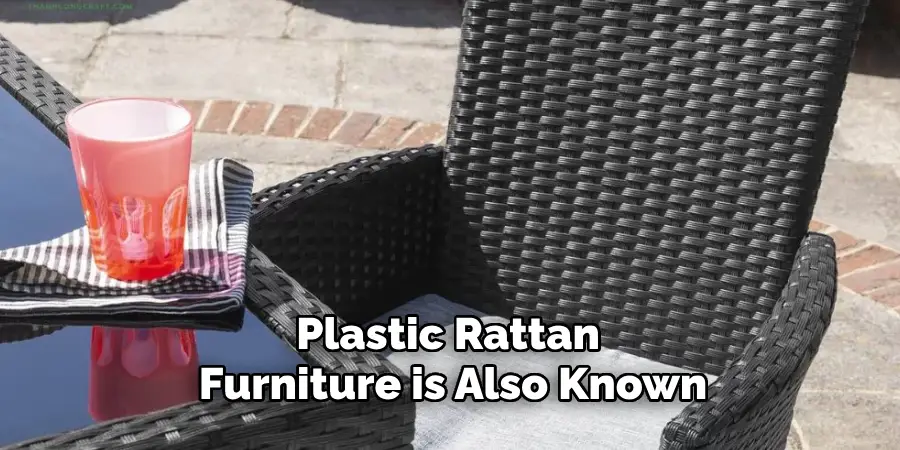
Step 2: Remove Old Paint or Stain
If your plastic rattan furniture has any old paint or stain, it’s important to carefully remove it to ensure a smooth and clean surface. Start by gently sanding the surface using fine-grit sandpaper. This will help to remove any loose paint or stain without damaging the underlying plastic fibers. Work in small sections and sand lightly to avoid scratching the material. For stubborn areas where sanding may not be enough, consider using a gentle paint remover specifically formulated for use on plastic surfaces.
Always follow the manufacturer’s instructions when applying paint removers, and wear protective gloves and eyewear to ensure safety. Once the old paint or stain is removed, wipe down the furniture with a damp cloth to remove any residue, and let it dry completely before moving on to the next step.
Step 3: Repair Any Damaged Areas
Inspect the furniture for any cracks, breaks, or loose pieces. If you find any damages, use a strong adhesive specifically designed for plastic materials to repair them. Apply a small amount of adhesive to the damaged area and gently press it together until it holds. Wipe off any excess glue with a damp cloth and allow it to dry completely before moving on to the next step.
The sooner you address any damages, the easier it will be to repair them and prevent further deterioration of your furniture.
Step 4: Choose a New Color or Pattern
Now comes the fun part – choosing a new color or pattern for your restored plastic rattan furniture! This is an opportunity to get creative and customize your furniture to better suit your current style preferences.
Consider using spray paint specifically formulated for use on plastic surfaces. Many manufacturers offer a wide range of colors and finishes, allowing you to achieve a new look that complements your living space.
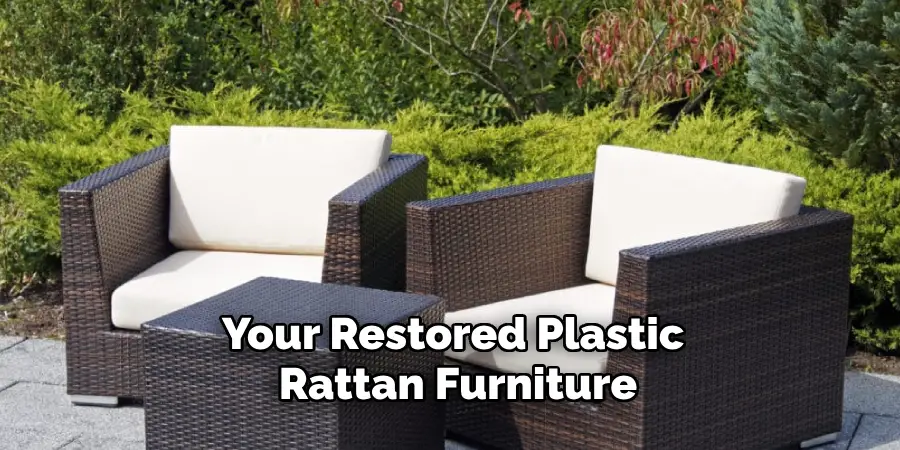
Step 5: Protect Surrounding Areas
Before applying any paint or stain, make sure to protect surrounding areas from overspray or drips. Cover the ground with a drop cloth or plastic sheeting and use painter’s tape to cover any nearby surfaces that you don’t want to get paint on.
It’s also important to work in a well-ventilated area, preferably outdoors, to avoid inhaling any fumes during the restoration process.
Step 6: Apply Paint or Stain
Following the manufacturer’s instructions, apply the paint or stain of your choice to your plastic rattan furniture. It’s best to start with thin and even layers, building up the color gradually. This helps prevent drips and ensures a smooth finish.
If you are using spray paint, hold the can about 8-12 inches away from the furniture and use sweeping motions to cover all surfaces evenly. Allow each layer to dry completely before applying another coat.
For staining, use a clean cloth or brush to apply the stain in the direction of the rattan weave. Wipe off any excess stain and let it dry completely before adding another layer.
Step 7: Add a Protective Coating
Once you have achieved your desired color or pattern, consider adding a protective coating to help extend the lifespan of your restored plastic rattan furniture. Choose a spray-on sealant specifically designed for use on outdoor furniture that provides protection against UV rays and moisture.
Apply the sealant according to the manufacturer’s instructions, and allow it to dry completely before moving or using the furniture again.
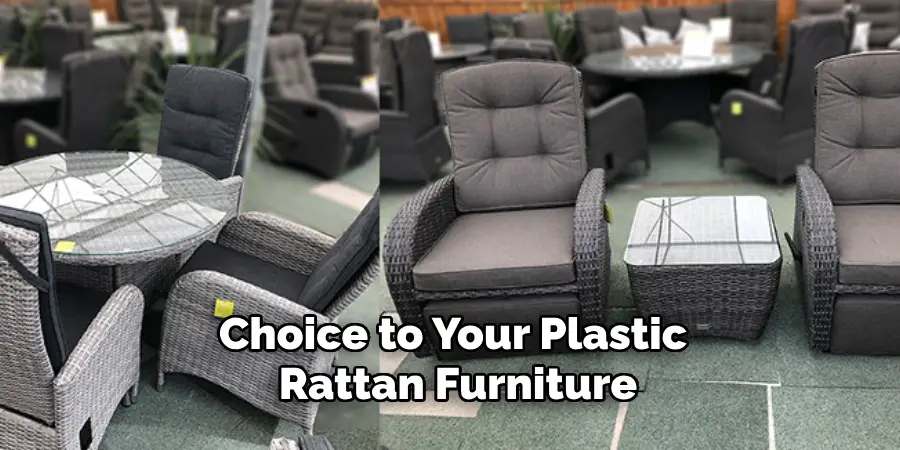
Step 8: Enjoy Your Restored Furniture!
Congratulations! You have successfully restored your plastic rattan furniture and given it a new lease on life. Now it’s time to sit back, relax, and enjoy your beautiful and personalized outdoor furniture once again.
Remember to regularly clean and maintain your newly restored furniture to keep it looking its best for years to come. With proper care, your plastic rattan furniture can continue to enhance your outdoor living space for many more seasons. So why wait? Start restoring your plastic rattan furniture today! Happy DIY-ing! #End
Plastic Rattan Furniture Maintenance Tips
- Regularly clean your furniture with mild soap and water.
- Avoid using harsh chemicals or abrasive scrubbers that can damage the plastic fibers.
- Consider adding a protective coating to extend the lifespan of your furniture.
- Repair any damages as soon as possible to prevent further deterioration.
- Store the furniture indoors during harsh weather conditions or cover it with a tarp to protect it from UV rays and moisture.
- Avoid placing heavy objects on the furniture, as this can cause sagging or breakage over time.
By following these maintenance tips on how to restore plastic rattan furniture, you can ensure that your restored plastic rattan furniture stays in great condition for many years to come! So don’t hesitate to start restoring and enjoying your outdoor living space today!
Frequently Asked Questions
Q: Can I Use Regular Spray Paint on Plastic Rattan Furniture?
A: No, it is best to use spray paint specifically formulated for use on plastic surfaces to achieve the best results. It is important to read the manufacturer’s instructions and choose a product that is suitable for outdoor use.
Q: How Often Should I Clean My Restored Plastic Rattan Furniture?
A: It is recommended to clean your furniture at least once a month, or more frequently if it is exposed to heavy use or harsh weather conditions. Regular cleaning helps to maintain its appearance and prevent dirt buildup.
Q: Is it Necessary to Add a Protective Coating?
A: While not necessary, adding a protective coating can help extend the lifespan of your restored plastic rattan furniture by providing extra protection against UV rays and moisture. It also makes cleaning easier.
Q: Can I Use Any Adhesive to Repair Damaged Areas?
A: It is important to use a strong adhesive specifically designed for plastic materials to ensure a secure and long-lasting repair. Regular adhesives may not work effectively on plastic surfaces. It is also recommended to follow the manufacturer’s instructions for proper application.
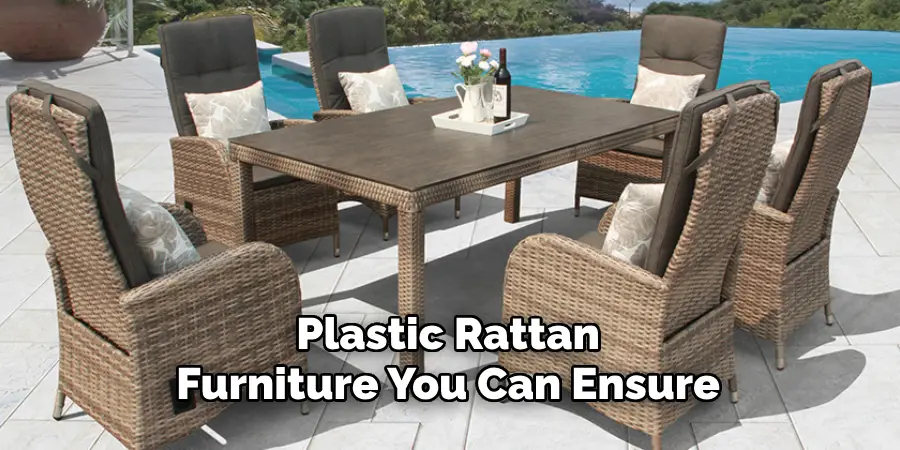
Conclusion
Restoring plastic rattan furniture can be a rewarding project that breathes new life into your outdoor space. By following the step-by-step guide and maintenance tips on how to restore plastic rattan furniture provided, you can transform worn-out furniture into vibrant pieces that reflect your personal style. Remember, the key to long-lasting restoration lies in selecting the right materials, applying them carefully, and maintaining regular upkeep.
With a little effort and creativity, you can enjoy the aesthetics and functionality of your plastic rattan furniture for many seasons to come. Embrace the DIY spirit and enjoy the satisfaction of creating beautiful, enduring outdoor furniture.
About
Angela is the chief editor of Indoorense. She began her career as an interior designer before applying her strategic and creative passion to lifestyle and home.
She has close to 15 years of experience in creative writing and online content strategy for housekeeping and cleaning,home decorations as well as other efforts.
She loves her job and has the privilege of working with an extraordinary team. She lives with her husband, two sons, and daughter in Petersburg. When she’s not busy working she spent time with her family.

